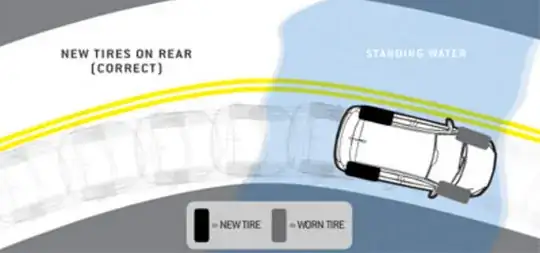As the titles says I've seen several shops indicate that if you can only replace two tires that they should go on the rear, example Firestone:
So shouldn't tires be placed on the front? I was under the impression that if your older tires were on your front you would loose traction if trying to turn in a rain storm. Another issue I would imagine is braking would be effected since you have greater of percentage power in the front?
Also referenced:
- Replacing new tires on front because rear ones are a different size
- Should one fit the least-worn tires to the rear wheels?
The purpose of this Q&A compares to the above two was to get a better answer on why the rear is preferred to the front. The voted question that is being considered as the duplicate of doesn't mention oversteer.
